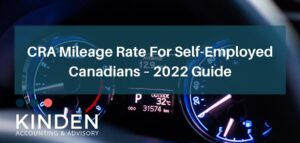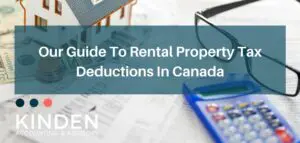One of the biggest sources of tax for the Canadian government is sales tax, which is charged on pretty much every transaction in Canada, with a few exceptions. In most Provinces, businesses charge and pay HST, which stands for Harmonised Sales Tax. If you’re going to do business in Canada, you need to understand what HST is, and what responsibilities you have as a business owner.
What is HST?
As usual, we googled what HST is and this is the definition we found:
The harmonized sales tax (HST) is a consumption tax in Canada. It is used in provinces where both the federal goods and services tax (GST) and the regional provincial sales tax (PST) have been combined into a single value added sales tax.
There’s a lot to unpack here.
Consumption Tax
Let’s start with consumption tax. What does that mean? Really, that just means that it is a tax that is charged based on using things. The more stuff you buy, the more you consume, and the more tax that you pay.
In comparison, income tax is not a consumption tax. You earn money. You pay tax on that money. It doesn’t matter what you do with it. It’s an income tax. No consumption required to pay the tax.
Federal Goods and Services Tax
Next let’s do Federal Goods and Services Tax and Provincial Taxes. As you probably know, there are several levels of government. When it comes to sales tax, both the Provincial and Federal Governments have their hands in your pockets. So when you’re talking about sales tax in Canada, there are really two elements to it:
- GST, which is the federal portion of sales tax
- PST, which is the provincial portion of sales tax
So what?
So, now you know that HST is really just a combined sales tax that includes Federal GST and Provincial PST into a single rate. That’s why they called it “harmonized” – can you hear the birds singing?
What is taxable supply?
To understand when you need to start charging HST, you must understand what taxable supply is.
Taxable supply is anything that the government has decided HST applies to, which is almost everything. However, for a bunch of reasons (mostly policy/political), there are certain things in Canada that HST doesn’t apply to.
Here are some examples of things that HST does not apply to. Keep in mind this is not a full list and this is only accurate as of the posting of this content:
- Residential rent
- Insurance premiums
- Interest
- Bank fees and
- Most exported goods
These are some examples, but the truth is that most things are taxable.
Now you know that taxable supply is just any product or service that HST applies to.
When do I have to start charging HST?
Most people think that when you start a business, you have to charge HST right away. This isn’t actually the case. You only have to charge HST when one of these things applies:
- You have more than $30,000 in taxable supply in the previous calendar quarter
- You have more than $30,000 in taxable supply in the previous calendar year
Remember – taxable supply is just the sales of any product or service that HST applies to. So, if you have more than $30,000 in sales during a calendar year, or more than $30,000 over two consecutive calendar quarters, you have to register and start charging HST.
It’s pretty easy when you’re looking at a calendar year because you just look at your sales for the year and if you’re over $30,000, you have to register to charge HST.
When looking at quarters, it’s a little bit less easy. Calendar quarters are these three-month periods:
- Quarter 1: January 1 to March 31
- Quarter 2: April 1 to June 30
- Quarter 3: July 1 to September 30
- Quarter 4: October 1 to December 31
So, if any four consecutive quarter period you have $30,000 in taxable supply, you have to charge HST. Here is an example:
| Quarter | Taxable Supply | Four Prev. Quarters | Calendar Year |
|---|---|---|---|
| Jan 1 – Mar 31, 2020 | $5,000 | $5,000 | $5,000 |
| Apr 1 – Jun 30, 2020 | $4,000 | $9,000 | $9,000 |
| Jul 1 – Sep 30, 2020 | $5,000 | $14,000 | $14,000 |
| Oct 1 – Dec 31, 2020 | $15,000 | $29,000 | $29,000 |
| Jan 1 – Mar 31, 20201 | $6,000 | $30,000 | $6,000 |
In this example, you do have to begin charging HST in the first quarter of 2020 (January 1 to March 31, 2021) because you had $30,000 in taxable supply in four consecutive calendar quarters even though you didn’t have $30,000 in taxable supply in the previous calendar year.
You have to charge HST on the transaction that causes you to reach the $30,000 in taxable supply. Let’s say you’re at $29,000 in taxable supply, and you make a sale for $1,000. That sale causes you to reach the $30,000 limit, so you have to charge HST on it and every transaction after that. Whatever transaction it is that puts you over the limit is the first transaction that you have to charge HST on.
Should I charge HST right away?
Many business owners ask if they should open up an HST account with the CRA as soon as they start their business. Remember – you are only required to register when the $30,000 rule is met, but you are allowed to register sooner.
The main benefit to registering early is if you are starting a business that is going to initially have losses. This is because you would be paying more HST than you collect, and be entitled to an HST refund. For example, if you have start-up costs of $10,000 + 15% HST and no sales, you would pay $1,500 in HST to your suppliers. When you do your HST filing, you would get that $1,500 back.
How do I start charging HST?
The first thing you’ll need to do is setup an HST account with the CRA. If you have a CRA My Business Account you can actually login and do it online. Otherwise, you can call the CRA and setup a business account over the phone.
They’ll ask you what you want as an effective date. You should pick the date that you hit the taxable supply of $30,000. Let’s say you’re at $29,000 on January 3rd and you have a sale for $1,000 on January 4th that pushes you over the limit. You would charge HST on that $1,000 sale and ask for an effective date of January 4th.
You’ll also be asked how often you want to file and remit HST. Your options are monthly, quarterly, or annually. People ask us pretty often what the best choice is and the honest truth that it depends.
The main advantages to annual filing are that you only have to do one HST return per year and it gives you extra cash-flow to work with because you don’t have to actually give the money to the CRA until the end of the year.
The drawback is that if you aren’t great at budgeting, when it comes time to pay the HST you owe at the end of the year, you might find yourself in a panic to come up with the cash you need to pay your HST bill.
So, if you are responsible with your money and are confident you can make sure you have the cash you need to pay your HST bill at the end of the year, annual is the best option. If you’re sort of responsible, you could go with quarterly. If you really don’t trust yourself to budget, then go monthly. That way you pay it and don’t have to worry about it.
Once you have your effective date and filing frequency, you’ll receive an HST number. This is an extremely important number. You need to make sure that it is included on all of your invoices. You also need to make sure that the amount of HST you are charging is visible on your invoices.
Here is a checklist for you:
- Make sure you charge HST on the sale that puts you over the $30,000 threshold
- Setup an HST account with the CRA through CRA My Business or by calling
- Pick an effective date that is the day that you met the $30,000 threshold
- Pick a filing frequency
- Make sure your HST number is visible on your customer invoices
- Make sure the amount of HST you are charging is visible on your customer invoices
- Set calendar reminders to file your HST so you don’t forget – they’ll penalize you!
What HST rate do I use?
The HST rate is different in many Provinces. For example, in Nova Scotia, HST is 15% while in Ontario HST is 13%. Figuring out which rate to charge can get pretty complicated. However, it comes down to this concept called “Place of supply.”
Most of the time, you’ll charge the HST rate that applies in the Province that you’re making the sale in. If you’re shipping a product to Ontario, you’ll charge the Ontario HST rate. If you own a restaurant in Nova Scotia, you’ll charge the Nova Scotia HST rate.
How much HST do I pay?
So your business is now charging HST. Great. But it’s also paying HST. Where does that come in to play? I’m not getting double taxed am I?
No – you’re not. When you pay HST, you get these things called “input tax credits” which is really just a fancy word for “HST you paid.”
When you do an HST return, at a very high level, it includes HST you collected and HST you paid. The amount you owe is the difference between the two.
Let’s say you run a construction company. You renovate a customer’s basement and charge them $10,000 + HST at 15%. To do the renovation, let’s say you needed materials that cost $5,000 + HST at 15%.
On the sale, you would have collected $1,500 in HST ($10,000 x 15%). When you bought the materials, you would have paid $750 in HST ($5,000 x 15%). So, you collected $1,500 in HST, but also have an input tax credit of $750, meaning the amount of HST you will owe will be $750 ($1,500 – $750).
Things like this are where it really pays to have strong bookkeeping practices in your business. If you lost the receipt for the $5,000 in materials, that actually costs you $750 in taxes because you miss out on the input tax credit. Bookkeeping is not just a necessary evil; it will actually save you money.
You can also receive an HST refund if you paid more HST than you collected. This typically happens with new businesses, or can also be the case for seasonal businesses. In this case, the government would actually be giving you money when you file your return.
Does HST get audited?
Just like income taxes, HST gets audited quite regularly. We regularly represent our clients in HST audits and deal with the CRA directly on our clients’ behalf. An HST audit is no joke. It really sucks. When you are audited, the CRA will expect you to have:
- Listings of all sales transactions
- Explanations for any sales transactions that didn’t have HST charged on them
- Listings of all input tax credit transactions, including the supplier, cost category, and HST paid
- Original copies of all input tax credit transactions claimed
If you cannot provide original copies of input tax credit claims, the claims will be disallowed, and usually penalties will also be added.
Audits aren’t a big deal if you’re prepared. If you have strong bookkeeping and record-keeping processes in place, getting the information together is a breeze. However, if you are still using a paper-based accounting system, losing receipts, or are neglecting your financial accounting, it is painful and expensive.



